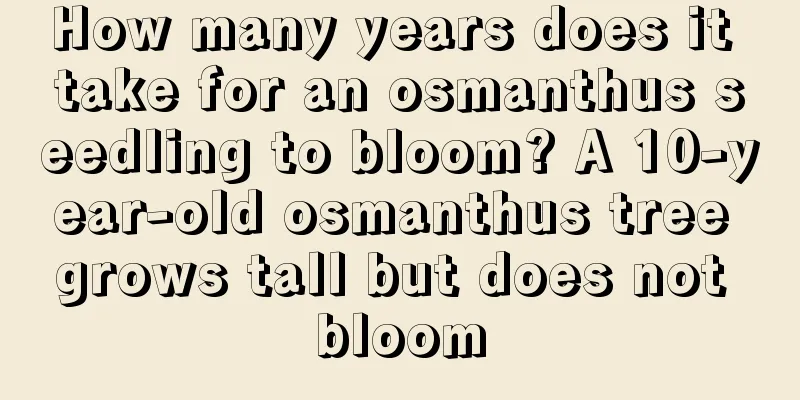How to grow peanuts to get high yield?

|
In order to achieve a high peanut yield , scientific management must be carried out at every link from planting to harvesting, balancing vegetative growth and reproductive growth, ensuring the healthy growth of the plants and preventing premature aging, so as to achieve the goal of having many strong plants, even flowers, many needles, many fruits, and full fruits. Let’s learn together how to grow peanuts to achieve high yields. 1. Deep tillage and land preparation Peanuts are suitable for planting in well-drained, deep, fertile sandy loam or light loam, with an optimal pH value of 6.5-7. Deep plowing can reduce obstacles to continuous cropping, improve soil permeability, promote microbial activity, and increase the absorption of nutrients and water. 2. Apply sufficient base fertilizer Although peanuts have a well-developed root system and rhizobia that fix nitrogen, they still need to be fertilized in moderation. Generally, 80-120 kg of biological organic fertilizer and 40-50 kg of peanut-specific fertilizer are applied per mu as base fertilizer to provide sufficient nutrition and prevent repeated cropping and pests and diseases. 3. Seed drying and grading Choose peanut varieties that are suitable for local conditions. Dry the seeds in the sun for 2-3 days before sowing to improve their physiological activity and water absorption capacity. The best time to shell the seeds is about 10 days before sowing. Select seeds with bright colors and large, full grains. Mix the seeds with pesticides before sowing to prevent underground pests. 4. Sow seeds at the right time and plant them at a reasonable density The sowing period should be appropriate to avoid early sowing affecting flower bud differentiation and late sowing affecting the growth period. Generally, sowing is done when the ground temperature is stable at above 15℃. About 8,000 holes are planted per acre for large peanuts and about 10,000 holes for small peanuts, with 2-3 seeds in each hole. 5. Check seedlings and replant 10-15 days after sowing, if you find that there are missing seedlings, you must germinate and replant them in time or use spare seedlings to replant, being careful not to damage the roots. 6. Clearing and Stubborn Seedlings After the peanuts emerge, immediately remove the surrounding soil to allow the cotyledons of the first pair of side branches to emerge above the ground. 7. Timely tillage and weeding For peanut intercropping, tillage and weeding should be carried out within 3-5 days after wheat harvest. 8. Soil cultivation It should be carried out before ridge closing 15-20 days after flowering to shorten the distance between the fruit needles and the ground, promote the early entry of the fruit needles into the soil, and increase the fruit setting rate. 9. Sprinkle the peanuts three times First time: Spray from the seedling stage to the beginning of flowering stage, use amino acid foliar fertilizer , pyraclostrobin, fenpropimorph, chelated boron, ammonium molybdate, etc. to supplement nutrition, prevent yellow leaves, and promote the growth of rhizobia. The second time: spray from the late flowering stage to the needle-setting stage, using seferamide, oxathiapiprolin, pyraclostrobin, chelated calcium, etc. to control excessive growth, increase fruit setting rate, and prevent diseases. The third time: spray during the pod-setting and fruit-swelling stage, using amino acid foliar fertilizers, pyraclostrobin, carbendazim-2, potassium dihydrogen phosphate, etc. to prevent diseases, extend the functional period of leaves, and promote pod development. 10. Moisture Management Peanuts are drought-resistant, and fertilization should be mainly organic fertilizer and supplemented by chemical fertilizer . After sowing in sufficient moisture, watering is generally not needed during the seedling stage. Appropriate drought helps the development of the root system. The plant requires a lot of water during the flowering needle and pod-setting stages, so it is necessary to ensure water supply and water the plant in time when it wilts. The above are the planting techniques for peanuts. As long as you master the methods, you can effectively improve the yield and quality of peanuts. While making reference, we should also consider the actual situation comprehensively.
|
<<: How to use water-soluble fertilizer effectively?
>>: Okra Planting Time and Method
Recommend
What should I pay attention to when raising tiger tail orchid?
Growth habits of Tiger Tail Orchid Tiger tail orc...
How to grow hibiscus in autumn
1. Autumn maintenance is very important For hibis...
What to do if the leaves of trumpet creeper turn yellow
Repotting soon If the leaves of the trumpet creep...
How to clean the leaves of succulent plants that are dirty after spraying (how to clean the traces of succulent plants after spraying)
To avoid drug residues in succulents, pay attenti...
Four seasons maintenance method of dianthus
Spring Care for Dianthus Spring is the transition...
I planted the watermelon seeds you spit out in a flowerpot, and the watermelons I harvested are so many that I can't finish eating them all.
Watermelon planting 1. First, you need a big wate...
Does green radish need sunlight?
1. Get some sun As a kind of green plant, green r...
What is the reason why the leaves of weeping jasmine turn yellow?
The name of Jasmine may lead people to mistakenly...
How much water should I use for my baby's breath? Can I spray the leaves?
1. How much water to pour When watering baby'...
Do azaleas shed their leaves in winter? Why do their leaves turn white?
1. Fallen leaves? Rhododendrons will shed their l...
How to fertilize Rainbow Jade
Fertilization method Rainbow Jade grows slowly an...
Is Milan a shade-loving or sun-loving plant?
Does Milan prefer shade or sun? Milan is a sun-lo...
Growth environment conditions and characteristics of Salvia miltiorrhiza
Growth environment conditions and requirements of...
How to plant a garden plum tree
Planting preparation Before planting a plum tree,...
How to raise the scarlet flower jade
1. Breeding methods 1. Soil: This type of plant c...









